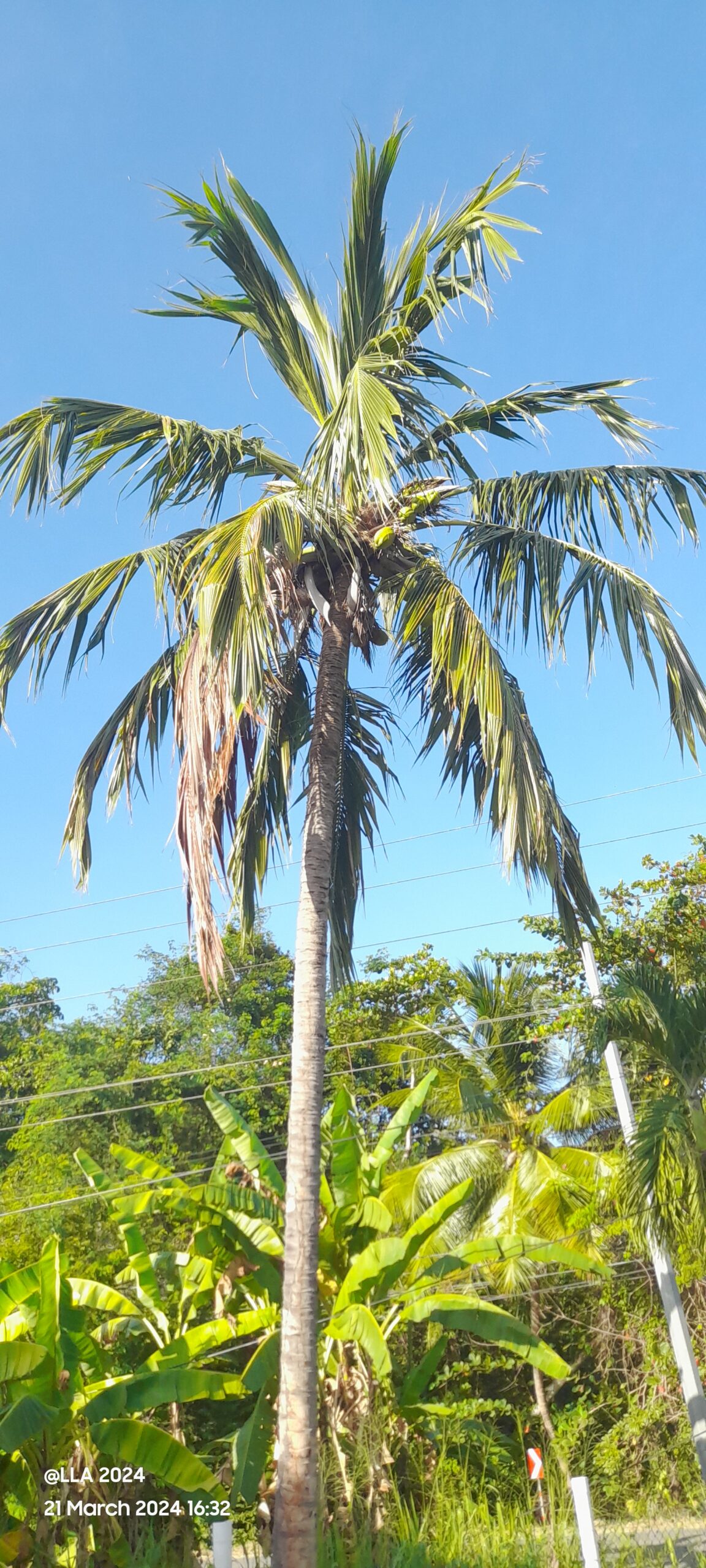Last week we encountered a strange-looking Coconut tree (Cocos nucifera). All the leaves from this palm tree emerged strangely, twistedly and deformed. The leaflets were stuck together, refusing to unfurl properly, creating a tangled mess. It was almost unrecognizable as a coconut palm!
Intrigued by this bizarre sight, we set out to diagnose the culprit behind this palm’s puzzling appearance. After some investigation, we discovered the surprising answer: a boron deficiency.
Yes, you read that right! Boron, a nutrient often overlooked, plays a vital role in palm health. A lack of boron can manifest in various ways, and in this case, it led to the palm’s new leaves becoming malformed and stuck together.
Boron deficiency in palms can manifest in various signs, including very slender, hair-like, transverse or longitudinal streaking on the leaves, necrotic leaflets and segment tips that hang down like a hook (referred to as “hook leaf”). Additionally, symptoms may include brittleness in the leaves, unopened leaf spears, and leaning crown syndrome. (Donald Hodel 2010)
Here’s the thing: many people wouldn’t recognize a boron deficiency. They might simply scratch their heads and wonder what strange new palm variety this was. However, understanding these hidden threats to plant health is crucial for keeping our agricultural sector and precious landscape greenery thriving.
Boron-based fertilizer treats the deficiency, but mulch around the base helps retain moisture and prevent nutrient loss, ensuring optimal uptake of boron by the palm.

